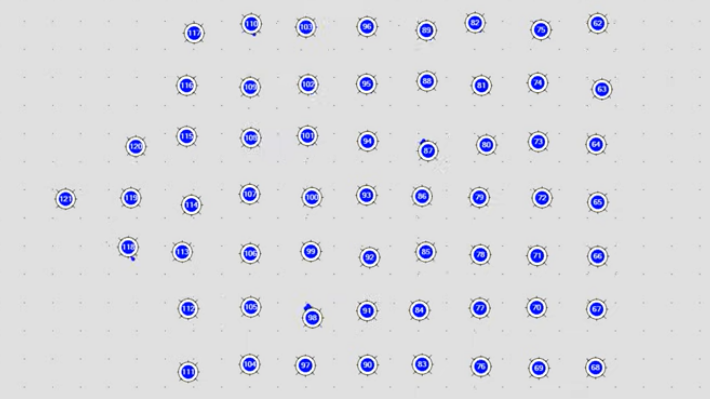How to increase location update rate?
Quick hints
- Set the Location update rate to 16+Hz in the Dashboard. The system will reach the update rate ceiling based on other limitations
- Disable Realtime Player to reduce an additional latency due to it to zero
- Set the Window of averaging = 0 and Distance filter = 0. It won’t increase the update rate but will reduce the latency
- Define service zones. If you don’t, the system uses the default service zones of 30m, and the update rate may not be optimal. If you reduce from 30m to 10m, for example, your update rate may rise up to 3x, if it was limited by the size of the submap, which is often the case
- Change from default 100kbps radio profile to 500kbps. You might see an increase if the location update rate is radio limited. Usually, the increase is less than that with service zones or zero if the system isn’t radio-limited. But the radio profile becomes very important in swarm robotics and IA. More about radio connectivity
- See the achievable update rates: Marvelmind Indoor Positioning System location update rate and user data transfer rate table
- Reduce the number of mobile beacons in NIA, if feasible. The update rate will increase proportionally
- Reduce the number of mobile beacons in MF NIA to less than 8, less than 16, etc. The update rate will improve proportionally to int(N/8)
- Choose the location update rate on the modem vs. the location update on the mobile beacon. If you update the location of every mobile beacon on the modem every time, the location update per mobile beacon will be lower due to higher radio traffic
Intro
There are several key parameters in any real-time locating system (RTLS) or indoor positioning system (IPS). Among them:
- Cost (HW + SW + deployment + running, etc.)
- Accuracy/precision of positioning
- Location update rate and latency
- The number of mobile objects tracked
There are many more, and you can learn about them in detail: https://www.youtube.com/watch?v=zg3oW_U_jdY&t=3949s. Let’s discuss deeper the two of them more:
- Location update rate
- Latency

Notice that location update rate and latency are usually linked but are not the same. For example, simultaneously, you may have a high update rate and high latency.
Also, remember that the accuracy of position measurements doesn’t depend on the location update rate. At the same time, if your system can tolerate more latency in the position measurements, it is possible to achieve higher accuracy of measurements. See more: Does accuracy depend on the location update rate?
Location update rate
Typical update rate with default settings with average-sized submap of 10-15m – 8Hz. We support up to 30-40 Hz for very small submaps of 2-3m. For larger maps of 30m and default settings – 6Hz or so.
Latency
There is a clear trade-off between latency and accuracy of tracking. By applying more filtering or averaging, it is possible to achieve better tracking quality, but latency will suffer. Thus, each case must choose between accuracy/quality and latency.
More on the adjacent subjects:
– Does accuracy depend on the location update rate?
IMU+Ultrasound Sensor Fusion Post-Processing
Further development
- Please send us a request to info@marvelmind.com. Maybe, you don’t need the high update rate or low latency as you think you are. Perhaps, there is another solution
- For swarm drones, MF NIA is the best option now. But for more than ten drones, the update rate of <4Hz may already be not good enough. You may need to change to IA instead of MF NIA (see more: https://marvelmind.com/pics/architectures_comparison.pdf). Since mobile beacons in IA receive an ultrasound, you could have to do the following:
- Sooner or later, we will complete the real-time Ultrasound+IMU sensor fusion. With an ultrasound location update rate of more than 2-4Hz, the sensor fusion with IMU will kick in and provide a 100Hz update rate and 10ms latency for location. It is similar to what we already have for direction and location. The key step in this development is 10ms because, with the help of the Realtime Player, it is already possible to have a 100Hz location update rate, but with 1-2sec latency – not 10ms latency. So small latency requires sensor fusion with IMU, which is very complex for the general case. Please email us to info@marvelmind.com because your particular task may be less complicated than a general one.